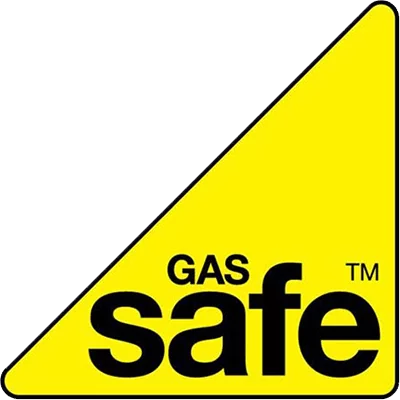General Plumbing FAQ'S
Why do plumbers charge a call-out fee?
How much does it cost to fit a walk in shower?
Can I fit an electric shower myself?
How much does a plumber charge to fit an electric shower?
Why are plumbers so expensive?
What is the average service call for a plumber?
How much does it cost to have a new bathroom fitted?
Do plumbers charge a call-out fee?
How much is a plumber call-out in the UK?
How much should a powerflush cost?
How much do bathroom fitters charge per day?
How can I prevent a plumbing emergency?
To reduce the risk of experiencing a plumbing emergency in your home or business, consider taking the following steps:
- Regularly check pipes and faucets for leaks
- Install water alarms to detect leaks early
- Insulate pipes in unheated areas
- Avoid flushing inappropriate items down the toilet
- Schedule regular maintenance checks with a professional plumber
- By taking these preventive measures, you can save yourself a significant amount of stress, money, and damage to your property.
How do I Know if I Need a Plumber?
It can be challenging to determine whether you need a plumber or not, but here are some common signs to look for:
- Leaky taps or running toilets
- Slow draining sinks or bath tubs
- Low water pressure
- Strange noises from pipes
- Water damage on ceilings, walls or floors
- An increase in your water bill
- If you are experiencing any of these issues, it is recommended to call a professional plumber to undertake an assessment and repair.
How do I Unclog a Toilet?
Unclogging a toilet can range from simple to complex, depending on the cause of the clog. Here are some steps you can try:
- Use a plunger by placing it over the opening and pushing down firmly
- Try a toilet auger to remove clogs deep in the pipes
- If these methods don’t work, call a plumber as the clog may be caused by a serious issue
- It is important to address clogged toilets promptly to prevent overflowing and further damage.
What Kind of Low-Flow Toilets Do You Recommend?
Low-flow toilets are a great solution for people looking to conserve water and save on their utility bills. Low flow toilets – typically use around 1.28 gallons per flush, compared to traditional toilets systems @ 1.6 gallons. There are several types of low-flow toilets available, including:
Dual flush toilets
Pressure-assisted toilets
Gravity toilets
It is recommended you consult with a professional to determine which type of low-flow toilet is most suitable for your needs.
Why Is My Toilet Always Running?
A running toilet can be caused by several issues, including:
- A faulty or worn-out flapper valve
- A faulty fill valve
- A clogged or misaligned flush valve
- A broken toilet handle
- A clogged or blocked drain
Can I replace the toilet flange myself?
Replacing a toilet flange can be a complicated task and requires some plumbing experience. If you are not confident in your ability to replace the flange properly, it is recommended to call a professional plumber to handle the job. Improper installation of a toilet flange can lead to leaks and other problems down the line. The plumber will have the necessary tools and experience to ensure the job is done right, helping to avoid any future problems with your toilet.
How Do I Test If My Toilet Is Leaking?
To check for a leak in your toilet system, you can try these simple tests:
- Dye test – Add dye tablets into the toilet water tank then wait 20-30 minutes. If the water in the toilet bowl turns the same color as the dye, it means water is seeping into the bowl, indicating a leak.
- A simpler alternative, which you likely have in your kitchen cupboard, is a food coloring test – Place a few drops of food coloring in the toilet tank and check the bowl after 15 minutes. If the water in the bowl changes color, you have a leak.
- Meter test – Check the water meter before and after a time when no water is being used. If the meter has moved, there may be a leak.
If you suspect your toilet has a leak, it’s best to call us for a professional diagnosis and repair.
My Water Bill Went up, How Do I Check for Leaks?
If you experience a sudden increase in your water bill, it may be due to a leak in your home. To check for leaks, the best place to start by reading your water meter. Follow these steps:
- Turn off all water appliances and fixtures in your home
- Take a reading of your water meter
- Wait for an hour or so and take another reading – If the numbers have changed, it may indicate a leak.
You can also look for visible signs of leaks, such as water stains, dampness, or mold, on walls, floors or ceilings.
What Do I Do If My Toilet Leaks at the Base?
A toilet leak at the base is most likely caused by a damaged wax ring or toilet flange. To resolve this, you can follow the following steps:
Turn off the water supply to the toilet
Remove the toilet tank
Inspect the wax ring and flange for any cracks or damages. (If either appear to be damaged this is likely the cause.)
It’s crucial to address the leak promptly to avoid water damage and mold growth. If you’re uncertain about the repair process, contact a professional plumber for assistance.
How to Fix a Leaking Tap?
A leaking tap can cause annoyance and result in higher water bills if not addressed. Here’s what you can do to fix it:
- Turn off the water supply to the tap.
- Remove the tap handle to access the valve.
- Check it and see if there is any wear and tear on the valve – replace it if necessary.
- Reassemble the tap, and turn the water supply back on.
However this is not something that is recommended, unless you are confident you know what you are doing, if you are not certain, its best to call a professional plumber to further inspect the issue to prevent further damage and water waste.

